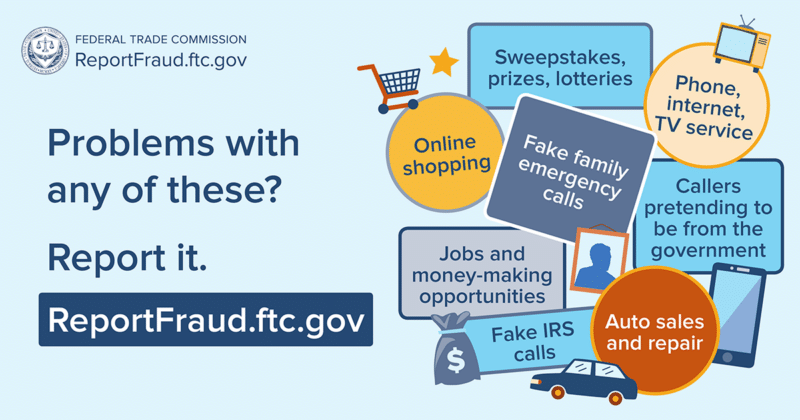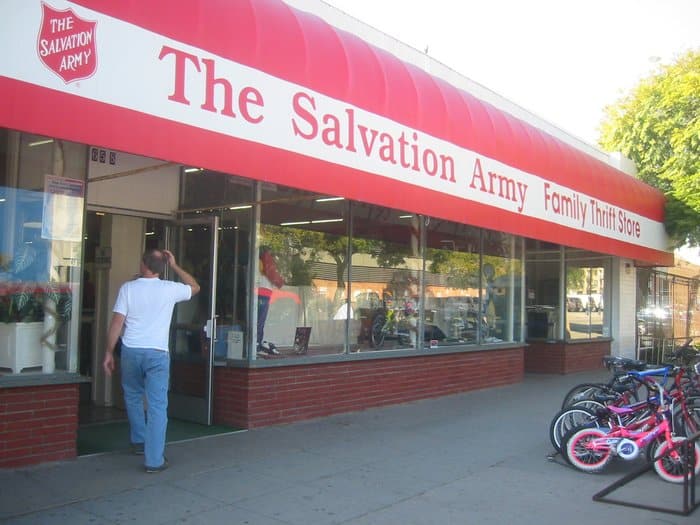
If you’re struggling to make ends meet, seeking financial assistance can be an excellent idea. After all, there are numerous government benefits programs out there designed to help those in need.
However, if you’re looking for hardship grants for individuals, it’s important to know that these grants don’t exactly exist. The government gives money to businesses, schools, non-profits, and all kinds of organizations in this fashion. But for individuals, you have to apply to specific benefits programs, not a catch-all hardship grant that pays you with free money.
But don’t stress: our team has researched and outlined many benefits programs you can use if you’re facing financial hardship. Let’s dive in!
Want fun ways to earn a bit extra from home? Checkout:
- Scrambly: Earn cash by playing fun mobile games and downloading apps!
- Branded Surveys: Share your opinion to earn gift cards and PayPal money!
Understanding Hardship Grants for Individuals
Generally, the government offers various benefits programs that support specific needs rather than sending out direct cash handouts known as “hardship grants.”
For example, you can find benefits programs related to housing, nutrition, energy bills, medical care, and more needs. Financial assistance programs also exist, but again, they’re designed to support specific groups and you can’t apply for a general hardship grant for individuals.
That said, there’s a wealth of programs and financial assistance options out there. Let’s cover some of the major ones to get you started!
Types of Hardship Grants & Government Benefits Programs
Hardship grants and benefits programs provide financial aid across various needs to alleviate burdens during tough times. Here's an overview of the different types of assistance that's available.
🍎 Food & Nutrition Benefits
Getting assistance with food and nutrition is one cause we care about at The Budget Diet. And the great news is that there are plenty of programs you can apply to:
- SNAP (Supplemental Nutrition Assistance Program): Also known as food stamps, SNAP offers nutrition benefits to supplement your food budget if you’re a low-income household that qualifies.
- TEFAP (The Emergency Food Assistance Program): Like SNAP benefits, TEFAP is a federal program that helps low-income households supplement their nutrition with natural, high-quality foods at no cost.
- WIC (Women, Infants, and Children): This program supports the nutritional needs of pregnant women, new mothers, and young children with food benefits and access to health services.
- National School Lunch Program: Offers discounted or even free lunches for children at school.
- SFSP (Summer Food Service Program): This benefits program provides healthy meals and snacks to kids and teenagers even when school is out for summer.
😋 Pro Tip: Check out these 20 companies that give away free food for even more savings.
🏡 Housing Assistance
Like food benefits, there’s a range of housing assistance grants you can apply for instead of searching for generalized hardship grants for individuals:
- Section 8 Housing: This program helps with affordable rental housing for low-income individuals, giving you the chance to live in safe housing environments without shouldering the total housing cost.
- Public Housing: Public housing is sometimes available for lower-income families, seniors, and individuals with disabilities. Search for available public housing in your area to get started.
- RRAP: This program aims to provide affordable living in rural areas.
💓 Medical Bills Assistance
Several programs are also available to help people in need cover medical expenses and gain better access to healthcare:
- Medicaid: Provides health coverage to eligible low-income adults, children, pregnant women, elderly adults, and people with disabilities, helping with various medical costs. Learn more about Medicaid here.
- Medicare: People over 65 and those with certain disabilities can qualify for Medicare. This helps cover hospital care, prescriptions, and medical services.
- CHIP (Children's Health Insurance Program): This program provides healthcare for children from low-income families that earn too much to qualify for Medicaid.
💸 8 Nice Companies To Ask For Money When Times Are Tough.
🎓 Educational Support Grants
If you’re searching for individual hardship grants for educational purposes, you’re not out of luck. There are numerous programs and scholarships related to education as well that you can apply you:
- Federal Student Aid (FAFSA): Non-repayable grants such as the Pell Grant are available through filling out the FAFSA.
- TEACH Grant: This grant is available for undergraduate and graduate students who plan on teaching following their degree.
Note: Some educational grants, like the Academic Competitiveness Grant (ACG), aren’t offered anymore. However, you can search for a range of scholarships and educational grants from nonprofits, businesses, and other organizations and potentially cover all or most of your school expenses.
💰 Supplemental Income Programs
Supplemental income and social security income are perhaps the closest benefits to a “hardship grant” for individuals. However, one program is designed to help at-risk groups who need to supplement their income. The other is based on your work history and the points you earn over time.
- SSI (Supplemental Security Income): This is a federal income supplement program designed to help aged, blind, and disabled people, who have little or no income. It provides cash to meet basic needs for food, clothing, and shelter.
- SSDI (Social Security Disability Income): You can qualify for SSDI if you’ve worked a certain number of years. This is because each paycheck, you’re paying into SSDI and earning “work points” as you do. With enough points, you qualify for various levels of income support if you’re in need.
💵 10+ Realistic Ways To Make Money Without A Job.
📱 Connectivity Grants & Assistance
The government and other organizations also have benefits programs designed to help with connectivity. This can mean subsidies for internet bills, phone plans, and even free devices in some cases.
- Lifeline Program: This program offers reduced-cost or free communication services to eligible low-income households, ensuring you stay connected with phone and internet services.
- EveryoneON: This non-profit helps families find low-cost internet and computers to stay connected. So far, it’s helped over 1 million people connect to the internet.
Note that some programs, like the Affordable Connectivity Program (ACP), are winding down. But many charities, internet, and phone companies offer support to low-income groups.
Check with providers in your area like Verizon, SafeLink, TruConnect, and Assurance Wireless to see what support is available.
💻 How To Get A Free Laptop From Amazon.
👎 Disaster Relief Grants
- FEMA Assistance: If you're in a federally declared disaster area, FEMA offers grants to help you with expenses for temporary housing, home repairs, and other serious disaster-related needs.
💡 Energy Assistance Grants
It might surprise you, but you can also get financial assistance relating to energy usage and availability in your home:
- LIHEAP (Low Income Home Energy Assistance Program): LIHEAP offers assistance with home energy bills, energy crises, weatherization, and minor home repairs related to energy efficiency.
- WAP (Weatherization Assistance Program): This program from the U.S. Department of Energy aims to reduce energy costs for low-income homes by improving how energy efficient they are. Learn more here.
- LIHWAP (Low Income Household Water Assistance Program): This program helps low-income households with their water and wastewater bills.
💧 9 Monthly Bills You Need To Lower Now.
Individual Hardship Grant Scams – What You Need To Know
Unfortunately, while there are numerous government programs out there that offer financial assistance, there are also many scams. In general, you should be weary of offers for “personal hardship grants” that promise you free money because you’re facing a difficult time.
These offers are usually scams and take advantage of people in need. Also note that absolutely no grant requires paying money upfront or giving away sensitive personal information like your bank details over the phone. And the golden rule is that if something sounds too good to be true, it likely is.
In short, hardship grants for individuals don’t exist in terms of pure cash payments. But you can find a list of available grants for businesses and non-profits at grants.gov.

Additionally, if you've encountered a scam, or if something seems off with a personal hardship grant offer you’ve received, don't hesitate to report it to the FTC at 1-877-382-4357. Your reporting really goes a long way in protecting yourself and others from falling for hardship grant scams.
Eligibility Requirements For Hardship Grants & Benefits
To access hardship grants, you need to meet specific criteria. That’s because grants and benefits programs are generally designed to help specific groups based on age, income, employment status, and various disabilities.
Income Thresholds
Your income level is a primary factor in determining eligibility. Many hardship grants have an income cap, so your annual earnings must fall below a certain amount. For example, programs may set thresholds such as:
- Single Individual: $30,000 per year or less
- Couples: $50,000 per year or less
Income limits can vary widely depending on the grant and on your state, so always check the specifics for each program online while applying.
Family Size
The number of people in your household can also influence the amount of financial assistance you receive. The same goes for your role in the household and how many people depend on you.
Oftentimes, families with children receive priority and more support. Veterans, service members, and their families might also qualify for additional support.
👉 16 Real Companies Giving Away Free Stuff.
Special Circumstances
Some grants cater to specific hardships or populations. Your eligibility can depend on factors such as:
- Unemployment status
- Disabilities
- Natural disasters in your area
- Emergency medical expenses
If you have faced a recent, unexpected hardship, look for programs tailored to your situation.
Residency Status
Lastly, where you live often impacts your ability to receive a grant. Residency requirements might include being a U.S. citizen or legal resident or residing in the state or county offering the grant. Proof of residency is likely required during your application process.
Charities & Nonprofits Can Also Provide Relief

This guide to hardship grants has largely focused on government assistance that’s available. However, charities and non-profit organizations can be valuable resources for relief as well.
Churches, charities, local support groups, and nonprofits all offer various programs to help those in need. This includes assistance with food, housing assistance, and childcare. Some organizations even help with donations like free furniture, vehicle access, clothing, or vouchers for housing and hotels.
The Budget Diet suggests researching charities and support groups in your city that offer help. The Salvation Army, Feeding America, Save the Children, CARE, Catholic Charities USA, Modest Needs, Lift, and Habitat for Humanity are just a few examples.
👉 12 Proven Ways To Get Free Money.
What’s The Application Process For Hardship Grants?
Because many grants and benefits programs cater to specific individuals with certain needs, the application process can feel a bit overwhelming.
However, it all begins with proper research and understanding if you’re eligible for a program or not. That’s why reading the resources we’ve linked above is a good starting point. We also suggest using this Benefits Finder tool from Benefits.gov to see which programs you qualify for.
From there, you generally need the following documentation to complete your application:
- Proof Of Identity: This is often a valid ID like a passport or your driver’s license.
- Proof Of Residency: A recent utility bill or rental agreement should suffice.
- Financial Records: Bank statements, pay stubs, and tax returns.
- Evidence Of Hardship: Depending on the grant, you might have to submit proof of job loss, medical bills, or some other evidence of the hardship you’re facing.
Make sure you double-check all the information before submitting your application. Different programs have different wait times, especially if many families and individuals are applying. The program you’re applying to will keep you up to date with your application and if you’re accepted.
Final Thoughts
While hardship grants for individuals don't really exist, this doesn't mean you can't find financial relief. In fact, there are plenty of programs out there. But you need to know where to look and how to apply.
Hopefully, this guide helps you get started. And remember: assistance availability can vary greatly by state and depending on your demographics. So, always research local options as well and use government websites and resources to find the help you need.
👉 10 Ways People Are Crushing Credit Card Debt.



